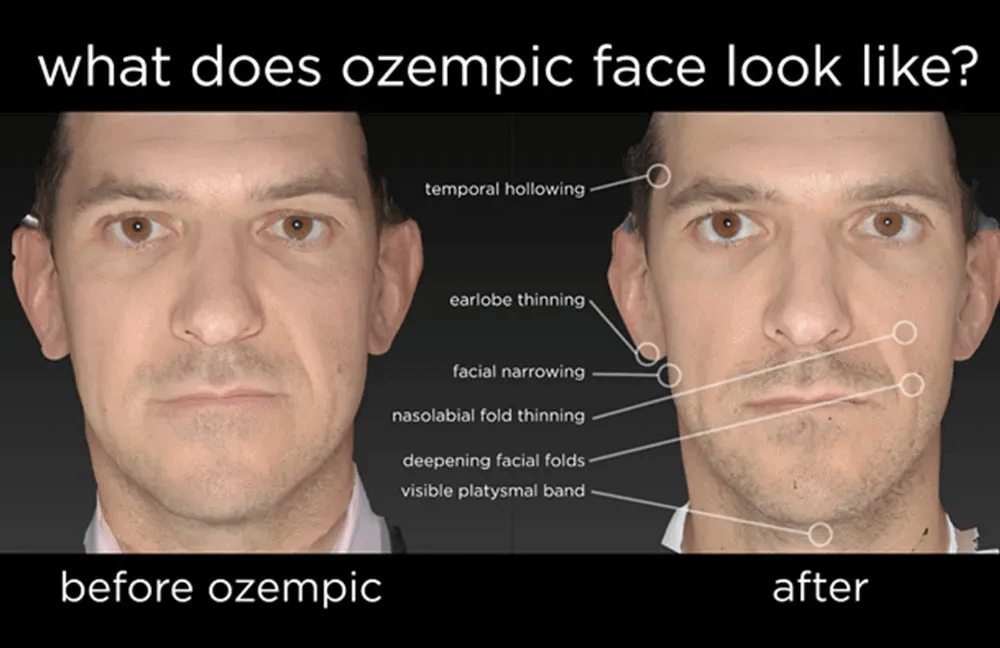
Understanding Ozempic Face: Causes, Effects, and Solutions
In recent years, the diabetes medication Ozempic has been making waves not just for its treatment of Type 2 diabetes but also for its weight loss benefits. However, as people turn to this medication for its potential to shed pounds, a curious phenomenon known as “Ozempic face” has emerged. This article delves into what Ozempic face is, its causes, who it affects, and how individuals can manage its aesthetic implications.
What is Ozempic Face?
Ozempic face refers to the noticeable changes in facial appearance that some individuals experience while using Ozempic (semaglutide). Users have reported a gaunt or hollow look in their cheeks and a more pronounced jawline. These changes are primarily linked to significant weight loss – a common side effect of the medication. While many people seek Ozempic for its benefits, they may be unprepared for the aesthetic shifts that accompany rapid fat loss, particularly in the face.
Why Does Ozempic Cause Facial Changes?
- Rapid Weight Loss: When individuals lose weight quickly, their body often sheds fat from various regions, including the face. This loss of facial fat can lead to a sunken appearance, especially if the skin loses elasticity, resulting in skin that appears saggy or depleted.
- Fat Distribution: Our bodies store fat in different areas, and when weight loss occurs, the facial fat is among the first to go for some individuals. The cheeks and temples may lose volume, resulting in a sharper facial contour.
- Dehydration: Some people on Ozempic may experience dehydration as a side effect, particularly if they are also making significant dietary changes. Dehydration can further contribute to a tired or aged appearance, accentuating the effects of weight loss.
- Skin Elasticity: As we age, our skin naturally loses collagen and elastin, leading to decreased elasticity. Rapid weight loss can exacerbate this issue, making the skin appear less firm and more saggy.
Who is Affected by Ozempic Face?
Not everyone who uses Ozempic will experience these facial changes. Factors that play a role in whether someone develops Ozempic face include:
- Genetic Predisposition: Genetics can influence fat distribution and skin elasticity, meaning some individuals may be more prone to facial changes than others.
- Age: Older adults are generally more susceptible to noticeable changes in skin elasticity and facial fullness after weight loss.
- Duration of Use: Longer periods on Ozempic may increase the likelihood of developing an Ozempic face, particularly if the individual is experiencing significant weight loss.
- Overall Health and Lifestyle: Nutrition, hydration, and lifestyle choices significantly affect how the body responds to weight loss and influences the skin’s appearance.
Managing Ozempic Face: Tips and Solutions
If you are concerned about the appearance of your face while using Ozempic, there are several strategies you can employ to help mitigate these effects:
- Stay Hydrated: Ensuring that you drink plenty of water can help keep your skin plump and reduce the appearance of hollowness. Aim for at least eight glasses a day, adjusting based on your activity level and individual needs.
- Healthy Diet: Eating a balanced diet rich in vitamins and minerals can promote skin health. Focus on foods high in antioxidants, healthy fats, and proteins. Incorporating omega-3 fatty acids from fish, nuts, and seeds can improve skin elasticity.
- Facial Exercises: Some individuals find that incorporating facial exercises into their routine can help strengthen facial muscles, potentially mitigating the appearance of sagging or hollowness.
- Skincare Regimen: Using a quality moisturizer designed for anti-aging can help maintain skin elasticity and hydration. Products containing hyaluronic acid or retinol may be beneficial in promoting skin suppleness.
- Consult a Professional: If you are particularly concerned about the aesthetic changes, consider consulting with a dermatologist or a cosmetic surgeon. Options such as fillers, Botox, or other non-invasive procedures could help restore volume and improve facial contours.
- Adjusting Medications: If you find the changes distressing, discuss them openly with your healthcare provider. It might be possible to adjust the dosage or explore alternative medications that align better with your health goals without compromising your facial aesthetics.
Conclusion
While Ozempic has proven effective for managing Type 2 diabetes and facilitating weight loss, the emergence of Ozempic face highlights the complex relationship between health treatments and physical appearance. Understanding the reasons behind this phenomenon can empower users to make informed decisions about managing their health and aesthetic concerns. Whether through hydration, a balanced diet, targeted skincare, or professional consultations, there are ways to navigate the changes while still benefiting from the weight loss offered by Ozempic. Always remember to communicate with your healthcare professional about any concerns you may have along your weight loss journey.















